Reducing Customer Acquisition Costs with Lead Scraping and Automation Sequences on LinkedIn: A Comprehensive Guide
In the ever-evolving landscape of digital marketing, businesses are constantly seeking efficient ways to reduce customer acquisition costs while maximizing their reach and impact. Among the plethora of strategies available, leveraging LinkedIn through lead scraping and automation sequences stands out as an increasingly popular and effective method. This comprehensive guide delves into how businesses can harness these techniques to optimize their marketing efforts and significantly reduce their customer acquisition costs.
Table of Contents
Toggle
Understanding Customer Acquisition Costs
Before diving into the specifics of LinkedIn strategies, it’s essential to understand what customer acquisition costs (CAC) entail. CAC refers to the total cost associated with acquiring a new customer, including all marketing and sales expenses. In today’s competitive market, minimizing these costs while maintaining quality leads is crucial for business sustainability and growth.
The Power of LinkedIn for Businesses
LinkedIn, a platform primarily known for professional networking, has emerged as a goldmine for businesses seeking quality leads. With over 700 million users, LinkedIn provides an unparalleled opportunity to connect with professionals, decision-makers, and potential clients across various industries.
Why LinkedIn for Lead Generation?
- Professional Audience: LinkedIn’s user base consists mainly of professionals, offering a more targeted approach for B2B companies.
- Rich Data: The platform provides detailed user profiles, which can be invaluable for identifying and targeting the right audience.
- Networking Opportunities: LinkedIn facilitates connections and networking, essential for building long-term business relationships.
Lead Scraping on LinkedIn: A Gateway to Targeted Leads
Lead scraping involves extracting data from LinkedIn profiles, such as names, job titles, companies, and contact information, which can be used for personalized outreach. This method enables businesses to create a highly targeted list of potential leads, significantly enhancing the efficiency of their marketing campaigns.
How to Effectively Scrape Leads on LinkedIn
- Use of Automation Tools: Various tools are available that automate the process of extracting data from LinkedIn profiles, saving time and resources.
- Adhering to Legal and Ethical Standards: It’s crucial to comply with LinkedIn’s terms of service and privacy laws when scraping data.
- Segmentation: Segmenting scraped leads based on criteria like industry, job role, or location can enhance the relevance and effectiveness of marketing campaigns.
Automation Sequences: Streamlining Lead Engagement
Once you have a list of potential leads, engaging with them through automation sequences can significantly improve efficiency. Automation in lead engagement involves sending personalized, automated messages to your leads, nurturing them through the sales funnel with minimal manual intervention.
Crafting Effective Automation Sequences on LinkedIn
- Personalization: Tailor your messages to address the specific needs and interests of each lead.
- Timing and Frequency: Determine the optimal timing and frequency for sending messages to avoid overwhelming your leads.
- Value-Added Content: Include content that is informative and valuable to your audience, establishing your brand as a thought leader.
Integrating Lead Scraping and Automation for Maximum Impact
The combination of lead scraping and automation sequences creates a powerful synergy. By extracting targeted leads and engaging them through automated, personalized sequences, businesses can significantly reduce the time and cost involved in acquiring new customers.
Best Practices for Integrating These Strategies
- Consistent Brand Messaging: Ensure your messaging is consistent across all stages of the lead generation and engagement process.
- Continuous Monitoring and Optimization: Regularly monitor the performance of your campaigns and make necessary adjustments for continuous improvement.
- Ethical Approach: Always prioritize the privacy and preferences of your leads, maintaining an ethical approach in your marketing efforts.
Measuring the Success of Your LinkedIn Strategies
To understand the impact of your LinkedIn lead generation and engagement strategies, it’s essential to track key metrics such as:
- Lead Quality: Assess the relevance and potential of the leads generated.
- Engagement Rates: Monitor how leads are interacting with your automated messages.
- Conversion Rates: Measure how many leads are moving through the sales funnel and converting into customers.
Case Studies: Success Stories of Businesses Using LinkedIn
Several businesses have successfully implemented lead scraping and automation sequences on LinkedIn, witnessing a substantial reduction in customer acquisition costs. These case studies can provide valuable insights and inspiration for your strategies.
Staying Ahead of the Curve: Adapting to LinkedIn's Evolving Landscape
As LinkedIn continues to evolve, staying updated with the latest trends and features is crucial for maintaining the effectiveness of your lead generation and engagement strategies.
Conclusion
Reducing customer acquisition costs is a pivotal aspect of business growth and sustainability. By harnessing the power of LinkedIn through lead scraping and automation sequences, businesses can not only lower their CAC but also ensure they are reaching out to the most relevant and promising prospects. Implementing these strategies with a focus on personalization, ethical practices, and continuous optimization can significantly enhance your marketing ROI, setting the foundation for long-term success in the digital marketplace.
Services
Packages
Latest Posts
Any Question?
Customer Acquisition Cost (CAC) refers to the total expense incurred by a business to acquire a new customer, including all marketing and sales costs. It's a critical metric because it helps businesses understand the efficiency and effectiveness of their marketing strategies and sales efforts. Reducing CAC is essential for improving profitability and achieving sustainable growth.
LinkedIn is deemed effective for lead generation, particularly for B2B businesses, due to its vast professional user base. The platform hosts over 700 million professionals, offering access to decision-makers across various industries. It provides rich user data for precise targeting and facilitates networking opportunities, making it a prime channel for acquiring high-quality leads.
Lead scraping on LinkedIn involves extracting data from user profiles, such as names, job titles, and contact information, for targeted marketing outreach. It is legal when done within LinkedIn's terms of service and adhering to relevant privacy laws. It’s important to use ethical scraping practices and automation tools that respect LinkedIn's guidelines to avoid violating user privacy and platform policies.
Effective automation sequences on LinkedIn should include personalized messaging that resonates with the target audience, appropriate timing and frequency to maintain engagement without overwhelming recipients, and value-added content to establish credibility and trust. Personalization and relevance are key to ensuring these automated messages are well-received and effective in nurturing leads.
Success measurement can be done by tracking key metrics such as lead quality, engagement rates, and conversion rates. Lead quality assesses the relevance and potential of the leads generated, engagement rates look at how leads interact with your content or messages, and conversion rates measure the effectiveness of these strategies in turning leads into actual customers. Regular monitoring and analysis of these metrics are crucial for ongoing optimization and success.

